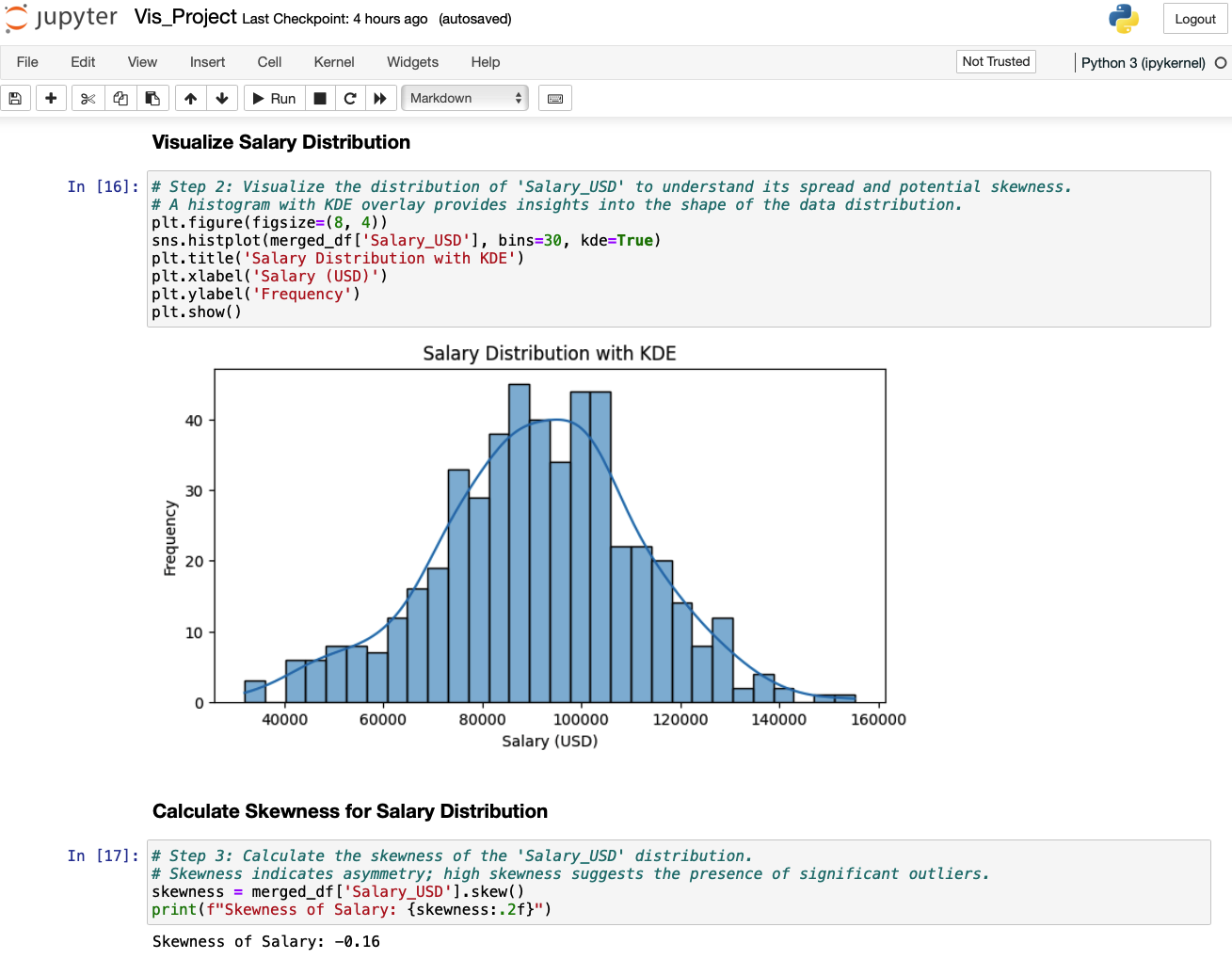Built With Python Libraries
Pandas and NumPy
Used extensively for data wrangling and analysis, enabling efficient handling of large datasets. Pandas was crucial for cleaning and organizing job market data, while NumPy supported numerical operations for calculating summary statistics like mean, median, and standard deviation across multiple columns.
Scipy
Leveraged primarily for outlier detection, Scipy's statistical functions enabled precise identification of extreme salary values across different job titles and regions. This step was essential for ensuring data quality, removing anomalies, and achieving a reliable, representative dataset for further analysis.
Matplotlib, Seaborn, and Plotly
Used for comprehensive data visualization. Matplotlib provided foundational plotting capabilities, while Seaborn enabled advanced statistical plots, highlighting salary distributions and trends. Plotly allowed for interactive, location-based analysis, enhancing insights into salary variations and AI adoption levels across different regions with choropleth maps.



